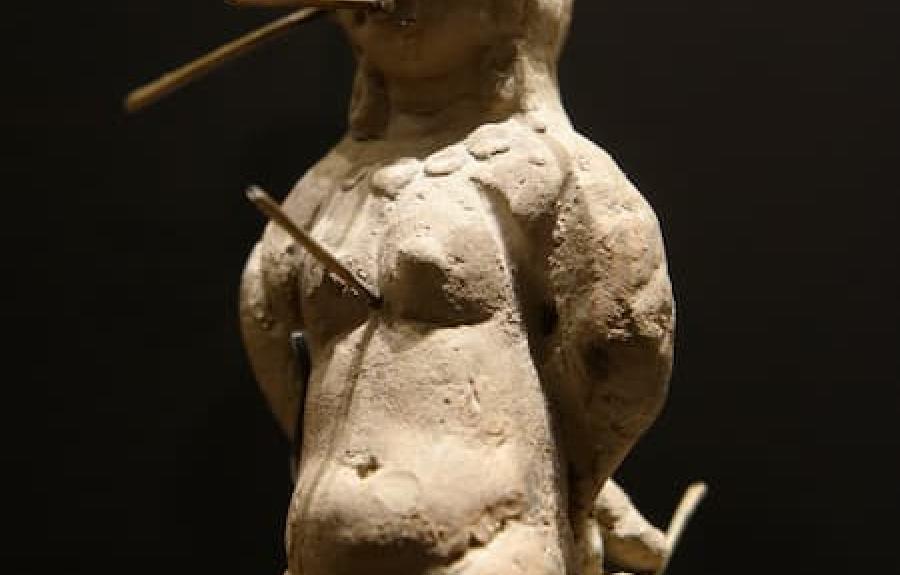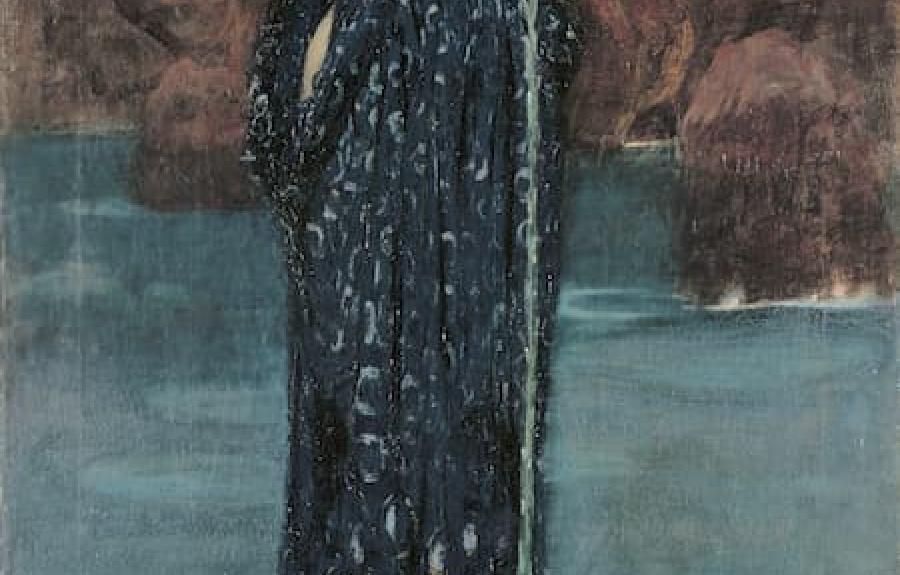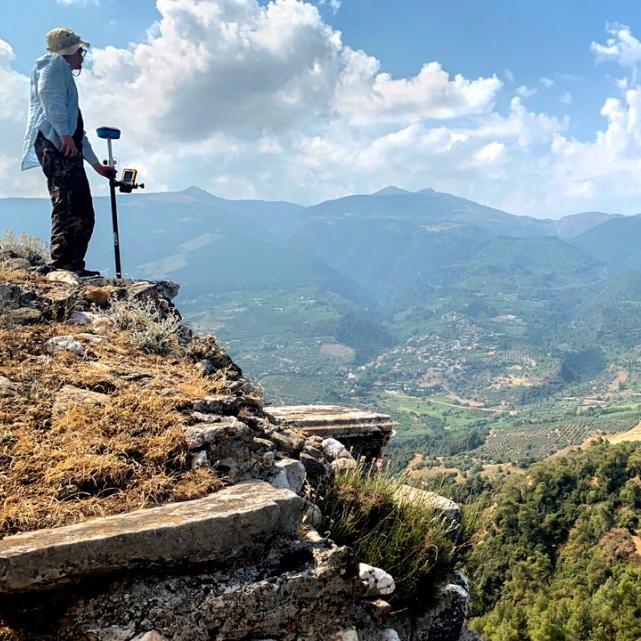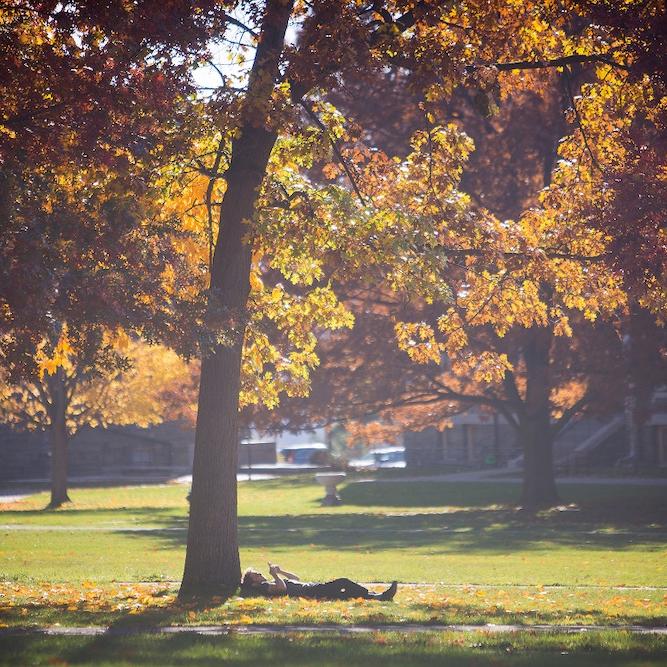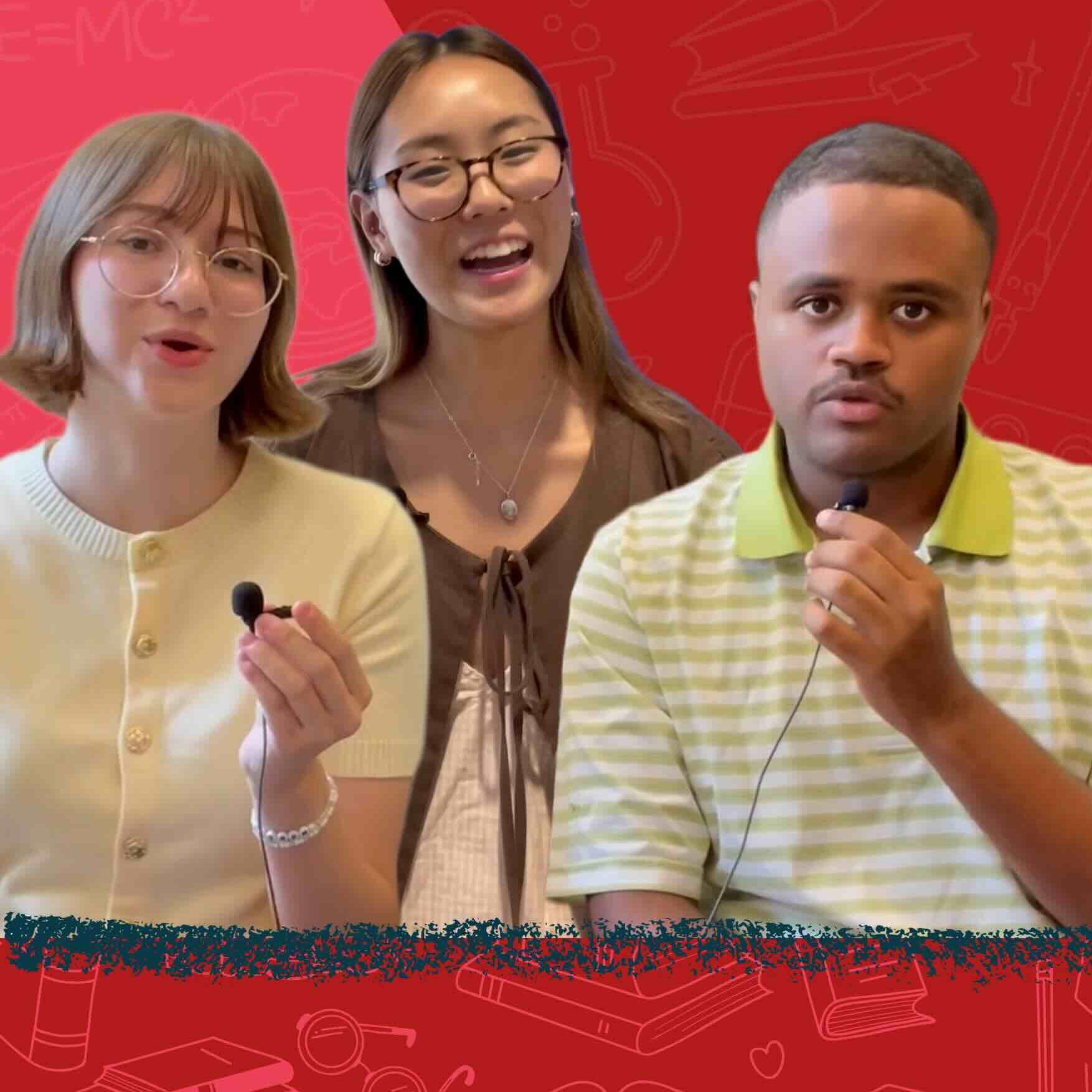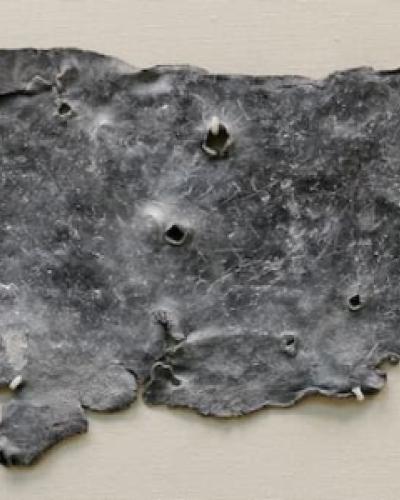Caitie Barrett, Associate Professor in the Classics Department, is teaching CLASS 2646 “Magic and Witchcraft in the Graeco-Roman World” this semester, which has turned out to be in very high demand. The course covers the whole span of time between the Greek Archaic period and the end of the Roman empire, and the final weeks of the semester will explore the legacy of ancient magic in the modern world.
From a collection of magicians’ spell-books from Roman Egypt and lead curse tablets from Roman Britain to literary accounts of witchcraft in the Odyssey, Lucan’s Pharsalia, or Apuleius’ Apologia, and magical items like lead figurines and amulets, there is a wide range of primary sources that students encounter throughout the course. For one student, engaging with primary sources is their favorite part of the course: “It's so interesting to see the kinds of spells that those in the Graeco-Roman World were conducting and how similar they are to the types of spells I would imagine modern people would want to perform. Seeing this connection between modern society and ancient societies is so interesting to me. Humans have always had a lot of the same desires: we want to fall in love, win our sports competitions, make money, get revenge. Despite the years separating us, we share so many similarities, and I love reading about that. There's also lots of funny parts to the primary sources too; like the terrible drawings, or the crude language, or absurd rituals people have to complete!”
Barrett similarly enjoys how the study of ancient magic helps us to humanize the ancient world. Ancient spells, which people used to curse their enemies, attract others to fall in love with them, cure their health problems, or keep their families safe, “give us such a vivid impression of what it was like to be a real person in the past,” says Barrett. Studying these rituals and practices also highlights some of the ways that the ancient Mediterranean world can feel very different from our own. “But all the same, these practices ultimately point to people whose basic needs and desires and anxieties were a lot like ours.”
Throughout the course, Barrett also puts the ancient evidence in dialogue with modern anthropological perspectives on what magic is and how it works. The course examines the works of theorists like Bronislaw Malinowski and Stanley Tambiah, who try to explain magical rituals, and compares them to the ancient Graeco-Roman material. One reason that a student decided to enroll in this course was because they had always been intrigued by modern magic, especially in literature. They write, “Most of the magic I’m familiar with is fictional, and I wanted to learn more about real magical rituals that were practiced by those in the ancient world.”
Voodoo_doll_Louvre_E27145b.jpg
Nude female voodoo doll in kneeling position, bound and pierced with thirteen pins. Found in a terracotta vase with a lead tablet bearing a binding spell (katadesmos).
Circe_Invidiosa_-_John_William_Waterhouse.jpg
Image of Circe, a figure from Greek mythology, who appears in Homer's Odyssey. This painting shows a scene not from the Odyssey, but from Ovid's Metamorphoses. A jealous Circe throws a magic potion into the well, where her rival in love Scylla is going to
Barrett has taught this course a few times in the past, and she notes that the biggest difference is the hybrid format; the lectures are online, but the discussion sections are in-person. She looks forward to applying lessons from this semester to future courses: “I’m trying to take the current circumstances as an opportunity to develop new teaching strategies, like making greater use of Canvas’s online discussion options, that I hope will continue to be effective even after this unusual semester is over.” Ruthie Portes, a graduate teaching assistant for the course, highly recommends this course to future students: “It is an opportunity to learn about the desires some people (elites and non-elites) had in the ancient world, and the ways they went about getting what they wanted (through curse tablets, magic spells, amulets, etc.). Learning about ancient magical practices and beliefs is one way to get at the humanity of the societies we study.”
Professor Barrett will be teaching two undergraduate courses in Spring 2021: one on Egypt in the time of Cleopatra, and one on great discoveries in Greek and Roman archaeology.

